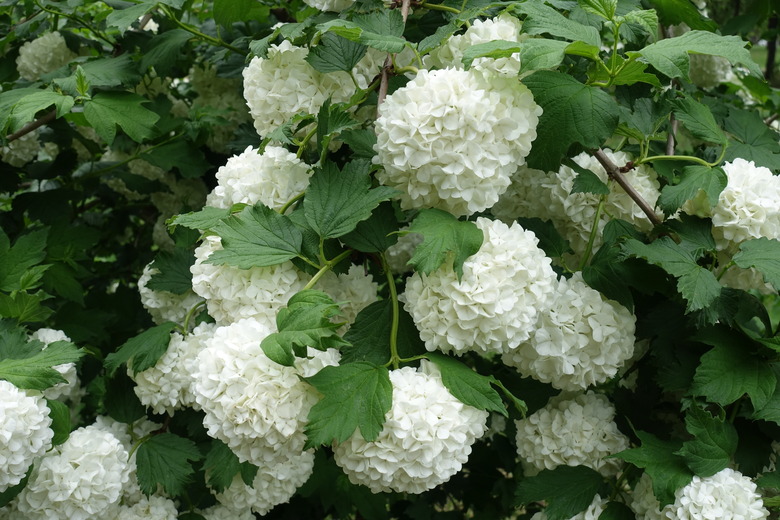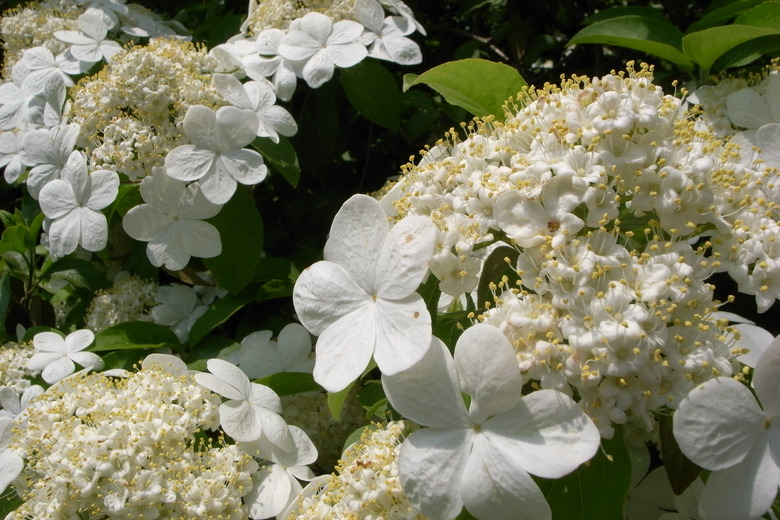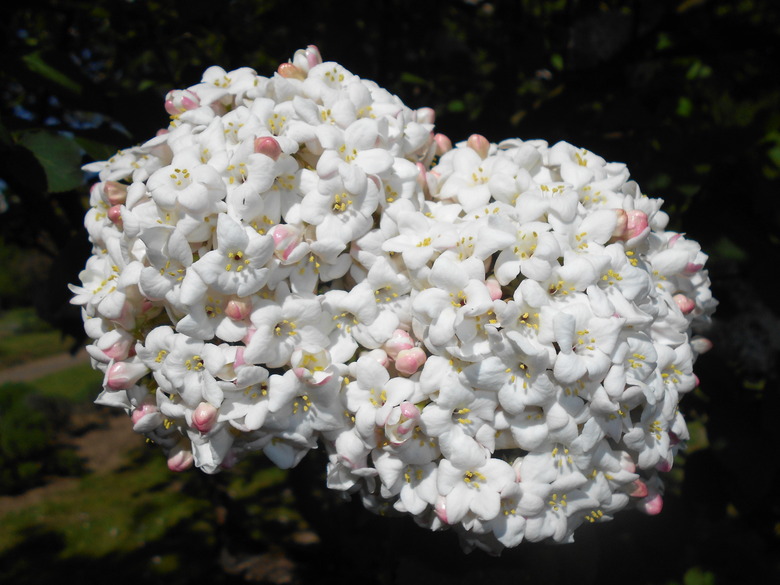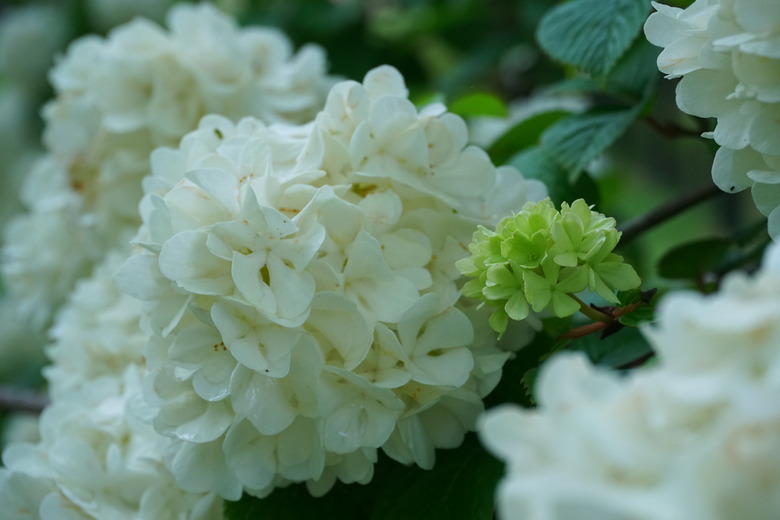How To Prune A Snowball Bush
Long past winter's last snowfall, a snowball bush is a spectacular sight in late spring to early summer. Although some plants in the Viburnum genus have flat lacecap-type flowers, other species sport the snow-white round flower clusters that give snowball bushes their common name.
Knowing when to prune a snowball bush is as important as knowing how to prune. Plants will not bloom if you prune at certain times of the year, and you'll miss their stunning floral display.
Types of Viburnum Snowball Bushes
Some Viburnum species commonly called snowball bushes are:
- Chinese snowball bush (Viburnum macrocephalum, USDA
zones 6 to 9): This species has the largest flower clusters of any viburnum snowball bushes, often spanning 8 inches in diameter. As showy as these flowers are, the individual florets that make up the massive flowerheads are sterile and do not produce fruit. First opening as chartreuse, the flowers turn pure white. This imposing shrub grows to 25 feet tall with a 20-foot spread.
- Fragrant snowball bush (Viburnum x carlcephalum,
zones 6 to 8): Flower clusters are slightly smaller than Chinese snowball bush (5-inch diameter), but they have a delicious sweet scent. This shrub is much shorter than Chinese snowball bush, with a mature height of 6 to 10 feet.
- Japanese snowball bush (Viburnum plicatum f. plicatum,
zones 4 to 8): This species has small flower clusters, typically only 2 to 3 inches in diameter, although they're typically produced in abundance for a showy springtime display. Shrubs grow 8 to 15 feet tall with an equal spread.
- European snowball bush (Viburnum opulus 'Roseum,' zones 3 to 8): Unlike the blooms on other snowball bushes, the 4-inch-diameter flower clusters on this plant age to light pink. Mature height of these shrubs is 10 to 12 feet with a 12- to 15-foot spread.
When to Prune a Snowball Bush
Knowing when to prune snowball bushes determines whether you'll prevent them from blooming the following year. Although it's not necessary to prune snowball bushes in order for them to bloom, the flowers may become sparser on older, unpruned shrubs. You may also want to cut back large plants to give them a tidier appearance.
If shrubs need pruning, trim them as soon as they're finished blooming in spring or early summer. If you wait too late, you'll cut off next year's flower buds, which begin to develop on stems in summer.
Tip
Trim snowball bushes as soon as they're finished blooming in spring or early summer. If you wait too late, you'll cut off next year's flower buds, which begin to develop on stems in summer.
How to Prune a Snowball Bush
Knowing how to prune snowball bushes depends, in part, on the species. Some types need only minimal pruning, which means removing broken or dead stems or trimming snowball bushes that have overgrown their planting spot and interfere with walkways or nearby plants.
For most snowball bushes, especially the larger species, remove the old stems immediately after they finish flowering when they reach 1 to 1 1/2 inches in diameter by cutting them all the way back to the ground. New stems will quickly grow to take their place.
A common pruning mistake is to keep the large stems and cut down all the young, smaller stems. What you'll end up with if you do this is a snowball bush with tall leafless stems that have a tuft of foliage at the tops of stems and few flowers.
Rejuvenation Pruning
If you haven't pruned your Chinese snowball bush in a long time—or ever—and it's grown tall and gangly with fewer flowers each year, you can cut it to the ground. Although this sounds drastic, and not recommended for all plants, it's a form of rejuvenation pruning that some plants can handle.
Although your snowball bush will quickly begin to grow new stems, it won't likely start to bloom again until two years after you've cut it all the way back.
References
- Clemson University Cooperative Extension: Viburnum
- North Carolina State Extension: Viburnum Macrocephalum
- Missouri Botanical Garden: Viburnum x Carlcephalum
- North Carolina State Extension: Viburnum Opulus 'Roseum'
- University of Georgia Cooperative Extension: Georgia Gold Medal Winner Offers Warm 'Snowballs'



